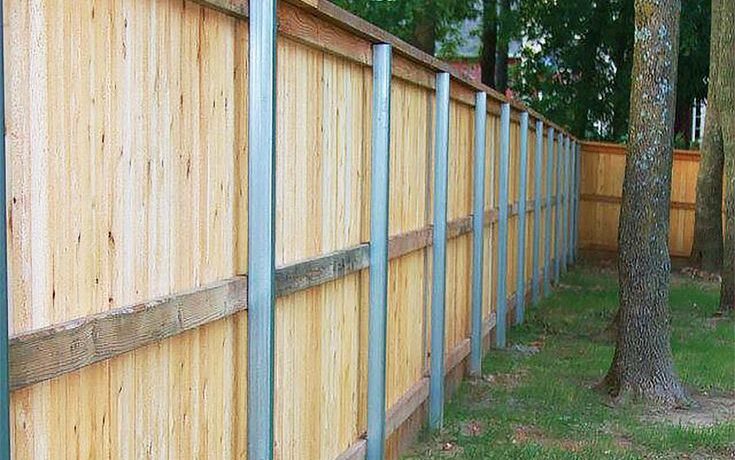All Categories
Featured

As sustainability becomes a priority for companies and property owners alike, the need for green items, consisting of fence materials, has actually climbed. Standard secure fencing options such as wood, metal, and vinyl can have negative environmental influences, however there are currently several eco-conscious options to take into consideration. Choosing environment-friendly secure fencing materials not only helps minimize your carbon footprint however also contributes to a much more sustainable and natural environment.
- Bamboo Fence. Bamboo is one of the most eco-friendly secure fencing alternatives offered. Unlike traditional woods, bamboo can be gathered in a couple of years and grows back quickly, making it a lasting selection for secure fencing.
Conveniences: Bamboo is fast-growing, lightweight, and lasting. It calls for less plant foods and pesticides compared to other plants, making it a low-maintenance alternative. Considerations: While bamboo is durable, it may require periodic upkeep to protect it from weathering and natural wear. It can likewise be susceptible to splitting in colder climates. 2. Recycled Products. Fences made from recycled materials are becoming progressively popular as an environmentally friendly choice. These fences are made from post-consumer plastic, reclaimed timber, and other recycled materials, maintaining waste out of land fills. Utilizing recycled materials decreases the demand for new raw resources, lessening ecological destruction.

Benefits: These fences help in reducing waste and save all-natural resources. They are likewise typically low-maintenance and resilient. Factors to consider: While recycled fencings can be long lasting, the appearances may not constantly match standard secure fencing options. Numerous designs are currently available that mimic the appearance of timber or stone. 3. Compound Fence. Compound fencing is made from a combination of recycled wood fibers and plastic, offering the look of wood without the ecological impact. Numerous composite fences are made from recycled content, additional enhancing their eco-friendly status. These fencings are durable, require minimal maintenance, and do not need to be treated with unsafe chemicals like traditional wood fences.
Conveniences: Composite fencings are sturdy, immune to rot, and call for little maintenance. They additionally supply a similar visual to timber without deforestation problems. Factors to consider: While they are low-maintenance, composite fencings might be more costly than typical timber or vinyl options. The production procedure can also be energy-intensive. 4. Cedar and Redwood Secure Fencing. Cedar and redwood are natural wood materials that are usually thought about much more environment-friendly contrasted to various other woods. These sorts of wood are naturally immune to degeneration, bugs, and moisture, which decreases the requirement for chemical therapies. Additionally, these trees are expanded in sustainable forests, making certain that they are collected sensibly.
Perks: Cedar and redwood are both resilient and naturally gorgeous materials. They provide all-natural resistance to parasites and rot, which helps minimize the requirement for chemical therapies. Considerations: These woods can be more expensive than other options. They also need periodic upkeep, such as tarnishing or sealing, to guarantee long life. 5. Living Fencings (Hedges and Bushes) Living fencings, made from shrubs, hedges, or trees, are an eco-friendly alternative that additionally offers natural privacy and aesthetic allure. Plants such as privet, boxwood, bamboo, and arborvitae are commonly utilized for creating dense, eco-friendly fences. These living obstacles assist with sound decrease, enhance air top quality, and provide habitat for neighborhood wildlife.
Benefits: Living fences advertise biodiversity, boost air high quality, and enhance the aesthetic appeal of your property. They also soak up carbon dioxide and add to a greener environment. Factors to consider: Living fences require maintenance, such as trimming and watering, to guarantee they expand properly. They might not provide the very same degree of security as conventional fence products. 6. Rock and Reclaimed Block Fence. Stone and recovered block fences are one more eco-friendly alternative. These materials are resilient, call for marginal maintenance, and have a long life-span. When redeemed from old structures or structures, they help in reducing the need for brand-new products and protect against waste from entering landfills.
Benefits: Stone and block are long lasting, weather-resistant, and give an ageless, traditional visual. Recovered products likewise have a marginal environmental impact. Considerations: The installment of rock and brick fencings can be labor-intensive, and the materials might be more pricey than other options. The long-lasting longevity and low maintenance expenses can make them a worthwhile financial investment. Conclusion. Picking an environment-friendly fence product is a wise means to decrease your ecological influence while improving your residential property's personal privacy and visual appeal. Bamboo, recycled materials, composite secure fencing, and living fencings all provide lasting choices that lower waste, save sources, and advertise a greener way of life.
By picking one of these environment-friendly fencing options, you add to the security of the environment while creating a stunning, functional outside area. The right product will certainly depend on your choices, climate, and the degree of maintenance you want to supply, yet rest ensured that there are many eco-conscious options that align with your lasting lifestyle.
Latest Posts
Your Local Flooring Professionals in Orland Park, IL
Published Apr 20, 25
1 min read
Comprehensive Security for Your Tranquility of Mind
Published Apr 20, 25
1 min read
Unlock Exclusive Discounts with WyHy's Love My Cooperative credit union Rewards
Published Apr 20, 25
1 min read